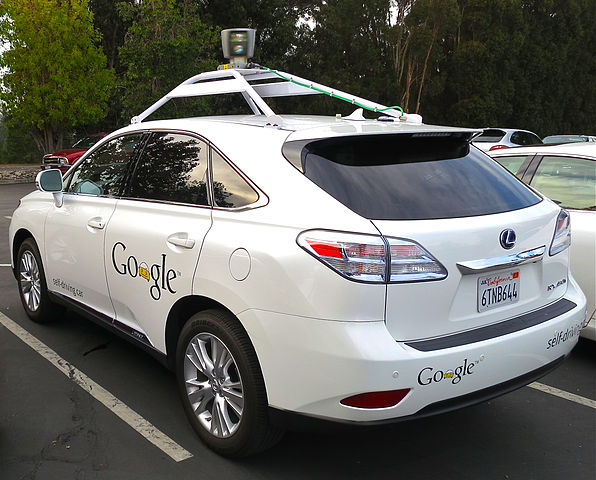In a previous post, I wrote about the extremely cool technology of 3D printers. Today I want to geek out about another imminent technological advance I’m even more personally excited for: the self-driving car.
This technology is exactly what it sounds like: a robotic car that senses its environment with ultrasound, radar and computer vision, automatically avoiding obstacles, obeying signs and traffic signals and following GPS routes to a programmed destination. But the transformative possibilities of this technology are far greater. If you were going to somewhere crowded like a sports game or a concert, you could have your car drop you off at your destination, drive away and park itself where more space is available, and return to pick you up when you were ready. The self-driving car could even make the concept of individual ownership obsolete: every town and city could have a fleet of circulating autonomous taxis, always ready to respond to a summons and take you wherever you want to go.
Car crashes are one of the leading causes of accidental death in the U.S., and autonomous cars have the potential to change that. Human drivers can be distracted, can fall asleep at the wheel, can drive while drunk or impaired, can fail to notice a person or another vehicle in their blind spot. A robot car will never have any of those problems. Even in the best case, a human being’s response time is some large fraction of a second, during which a car traveling at 50 or 60 mph will have moved hundreds of feet, not nearly enough time to avoid a sudden obstacle like a child running into the road. A robot car will be able to detect and respond to a danger like this in milliseconds.
As amazing and futuristic as it sounds, this is a technology that’s making its way onto the market right now. The U.S. defense agency DARPA has held a “Grand Challenge” for several years, where competing teams built robot vehicles that had to navigate a course in off-road and urban environments. Google has been quietly testing self-driving cars for some time, and has persuaded California and Nevada to legalize them. Some luxury cars already on the market can parallel park themselves, drive themselves in traffic jams and even drive themselves on highways with adaptive cruise control.
I’ve always thought that driving was a tedious chore, especially in traffic or on long trips, and I can’t wait to own a car that will do the work for me. So far, most autonomous cars require a person sitting behind the wheel to take control if a hazard occurs, but once the technology is well-established, I expect it will be possible for the passengers to read or sleep. The legal obstacles will almost certainly prove more difficult than the technological ones, but I have no doubt that they’ll be surmounted. The future is coming, and it’ll be here sooner than we think!
Image: A Google self-driving car. Picture by Steve Jurvetson, released under CC BY 2.0 license; via Wikimedia Commons
